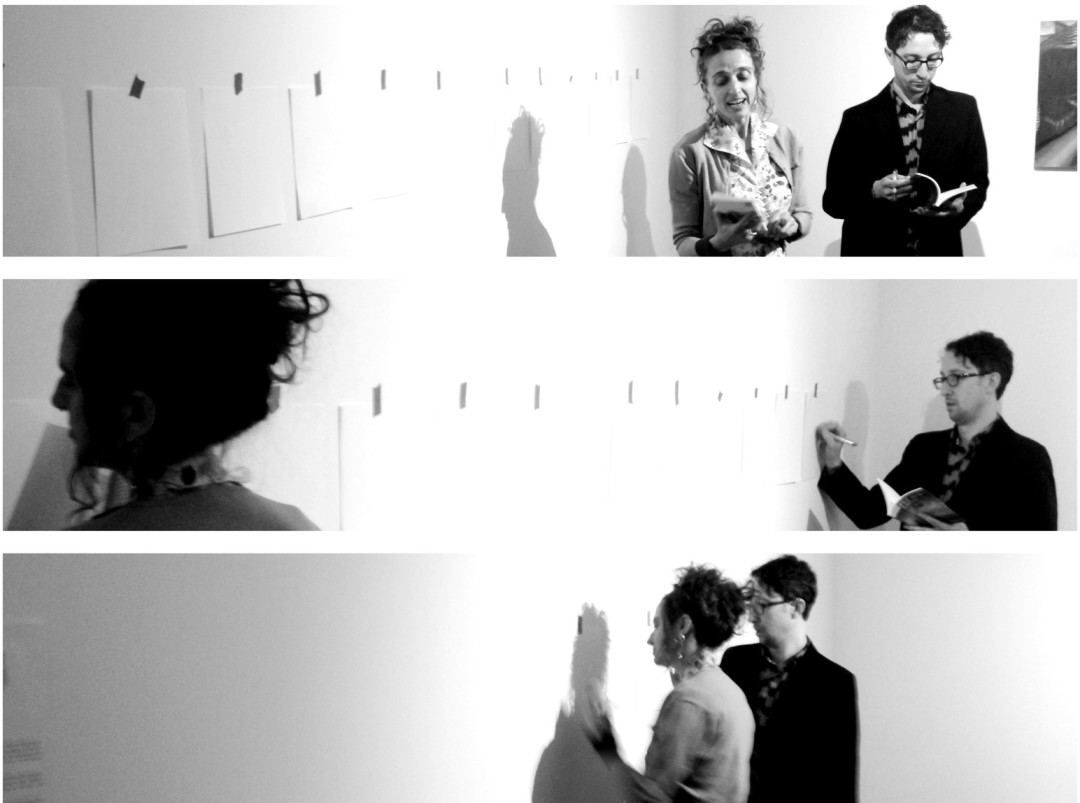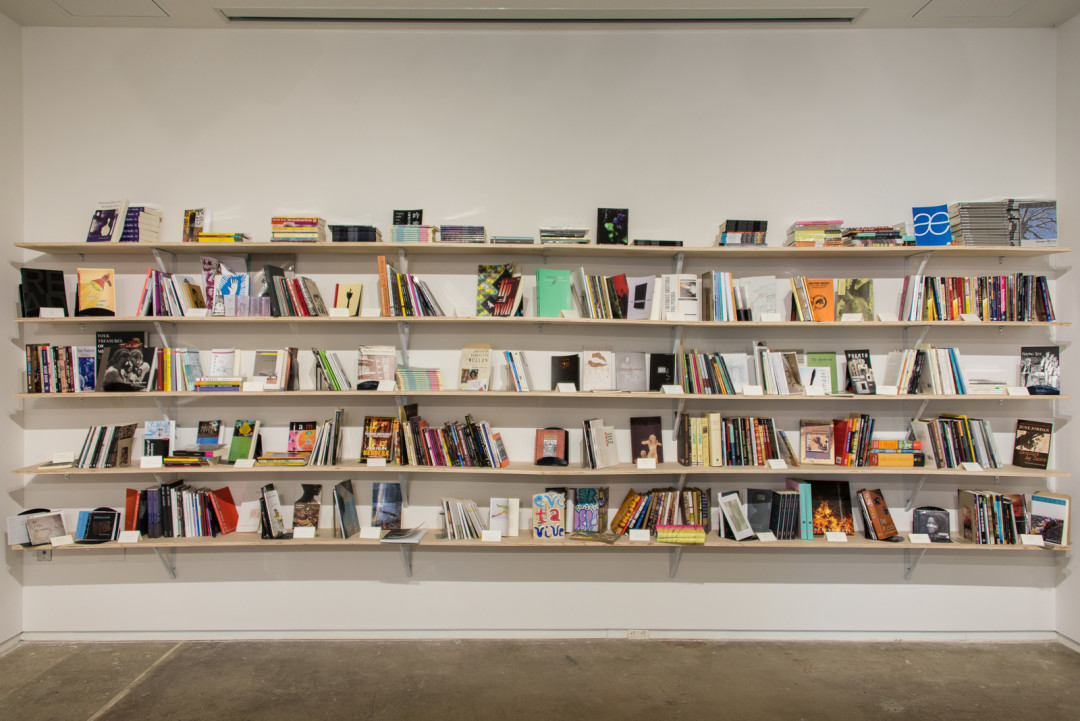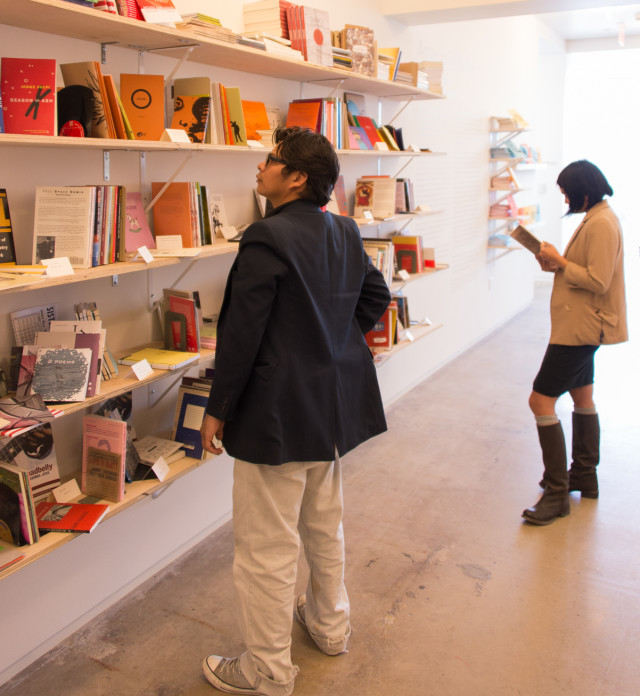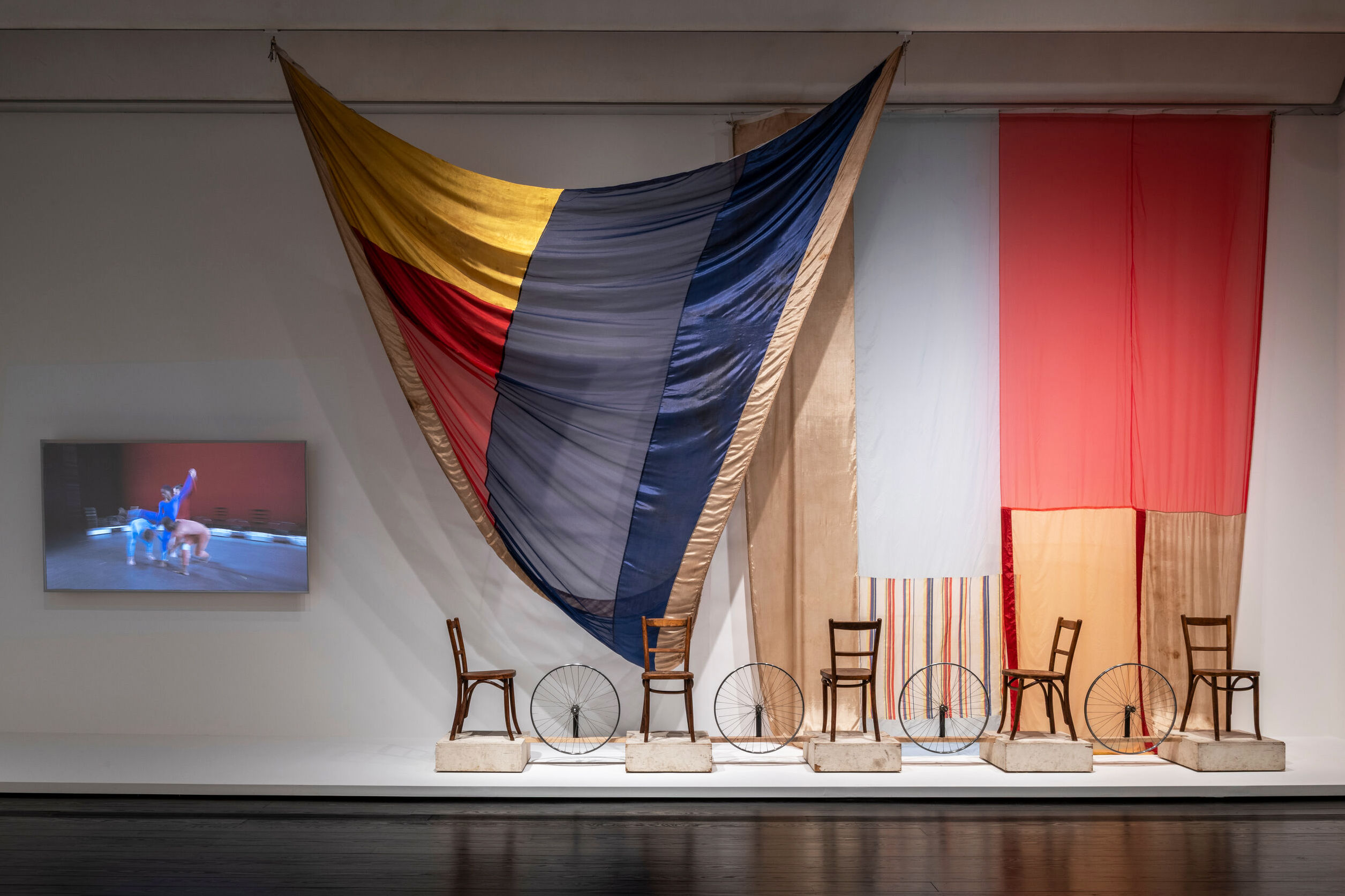…And Language Justice For All

Antena performing at the opening of Antena @ Blaffer, Blaffer Art Museum, Houston
Image: David Leftwich
Antena @ Blaffer
Thru May 10
Tue, Wed, Fri, & Sat 10–5; Thu 10–7
Free
Blaffer Art Museum
University of Houston, 120 Fine Arts Building
713-743-9521
blafferartmuseum.org
In 2010, Jen Hofer and John Pluecker formed Antena, an artistic collaborative devoted to “language justice." Poets, translators, interpreters, and activists, the pair explores the space between the literary world, visual arts, and cross-language social justice work in their current exhibition Antena @ Blaffer, a multi-media show at the University of Houston’s Blaffer Art Museum whose centerpiece is a pop-up bookstore featuring a wide array of books in both Spanish and English, all from small presses and all for sale to visitors. The exhibition also includes works by local and international artists that break down language barriers and provide the platform for an ongoing series of poetry readings, language justice workshops, and artistic discussions. Hofer and Pluecker are currently artists in residence at the Blaffer and have been teaching a weekly class for the University of Houston’s interdisciplinary art minor.
Michael: You both first met in 2006 at Writing Lab On the Border. Could you both speak to what brought you to that encuentro [an encounter or gathering]?
Pluecker: Sure. So, the Laboratorio Fronterizo de Escritores, the Writing Lab On the Border, was a project of Cristina Rivera Garza, who is a Mexican novelist and poet, and she brought together a bunch of different organizations to sponsor this.
Hofer: I knew Cristina because of the first book of translations that I published. It’s called Sin Puertas Visibles, and it’s an anthology of contemporary writing by Mexican women that came out in 2003, and I put Cristina’s work in that anthology. I translated other stuff of hers, and I’m now translating a novel, a book of essays of hers on the side. She and I met around the work on that anthology. We first met in the year 2003 and kept in touch, so she knew that I’m a translator, that I’m a poet, that I’m interested in cross-cultural and cross-language work, so she invited me to facilitate one of the weeks of that workshop.
Michael: How did participating in the workshops impact you as writers and artists?
Pluecker: I think it impacted me a lot more. I mean, I was there for six weeks, and for me it was very important. It was interesting because I actually went to Tijuana to learn more about North American Experimentalism. I hadn’t heard of language poetry. I hadn’t heard of new narrative. So for me it was a real eye-opener in that sense of getting to know innovative and experimental writing that I had not been exposed to living here in Houston. Also, it opened up a community of young writers my age in northern Mexico with whom I still have really strong relationships. So, it was very important for me in terms of getting to know other writers who are a part of my same generation and with whom I could have all kinds of discussions and dialogues in a way that I hadn’t found in the United States.
Hofer: For me, I mean, I had a very different perspective because I was there for a very different reason, although I did form relationships that lasted. That doesn’t always happen when I go in to teach for a week. You may like people perfectly well, but you don’t always make lifelong connections. Aside from JP, there are people from that workshop that I continue to have ongoing conversations and relationships with. That was the first time I had ever taught in Spanish, so that was really significant for me - not the last, thank God, but the first. Also, I’m always thinking about the kind of spaces that I might want to create or that I might want to participate in, so it was interesting to see this hybrid model. There isn’t anything like that in Mexico, and it’s very rare in the US.

Small press publications at Antena @ Blaffer, Blaffer Art Museum, Houston. Courtesy the artists and Blaffer Art Museum
Image: Pablo Giménez Zapiola
Michael: So in 2010, you both started, at least according to your website, dreaming about extending your work in language justice. What sparked that desire specifically in that year?
Hofer: Well, in 2010 we started dreaming about it together. I think we had both been thinking about it for many years prior to that. After we met at the Laboratorio, we started seeing each other, not so much in literary contexts, even though that was our initial connection, but in social justice interpreting contexts. The National Network for Immigrant and Refugee Rights had a national conference, and both of us were hired as interpreters to interpret for that conference. We started realizing that we had many, many things in common—[not just] our interest in writing experiments, and literary translation, and writing on both sides of the border, but also in both our professional and activist lives. We realized that we had a very similar development of our thinking around some of the challenges of interpreting for social justice contexts and the need for this thing that’s still in the process of being named and defined, which is language justice. It was in 2010 that we started talking about trying to approach those challenges together rather than separately.
Michael: From when you began discussing collaborating to actually doing it, can you speak to what form Antena took initially?
Hofer: The first projects we did together were all around social justice interpreting, and in a sense we’re still growing as Antena. My memory of the first time that we started conceptualizing how to undermine the divide between activist work and aesthetic work—rather than being like “Over here we’re social justice interpreters, and over here we’re experimental writers and translators”—was that we had decided that we wanted to write a grant proposal. It was a grant we didn’t get, but what we got out of it, or what I got out of it, was really useful because it forced us to articulate “What is Antena” or what we would conceptualize Antena to be if someone gave us 50 grand.
Michael: When you were putting together Antena @ Blaffer and Encuentro, how did you decide on the artists you wanted to involve?

View of the exhibition Antena @ Blaffer, Blaffer Art Museum, Houston. Courtesy the artists and Blaffer Art Museum
Image: Pablo Giménez Zapiola
Hofer: We knew that we wanted to have half the artists be from Houston, roughly, and that we would be doing Encuentro. To make it a well-functioning bilingual space, there needed to be people presenting both languages, otherwise it would just default to the dominant language. We knew it would be easy to find monolingual English speakers or bilingual speakers, but we also looked for monolingual Spanish speakers. We also wanted to work with artists who engage with text and artists who in some way exist in the public sphere and engage with social concerns and questions we hold most dear. One of our primary goals was to create a space where conversations could happen that wouldn’t have happened otherwise, whether it was a language difference or artists who might not have encountered each other’s work. For me, one of the greatest successes of the Encuentro was that most of the artists had never met, aside from some of the Houston artists.
Plucker: Part of what we try to do in setting up these bilingual spaces is that we know we can say the words “multilingual spaces” and “language justice” but what people imagine has nothing to do with the way we’ve experienced it, which is fine. I’m also interested in what people are thinking that we haven’t imagined, but we’ve noticed that when people have that experience of speaking to someone or listening to someone who doesn’t speak the same language, all kinds of different realizations and thoughts come out of that moment that are really unexpected. We wanted people to have that experience and plant seeds so that there’d be reverberations that serve to increase the dialogue about what it means to work multilingually in their own different spaces and communities.




